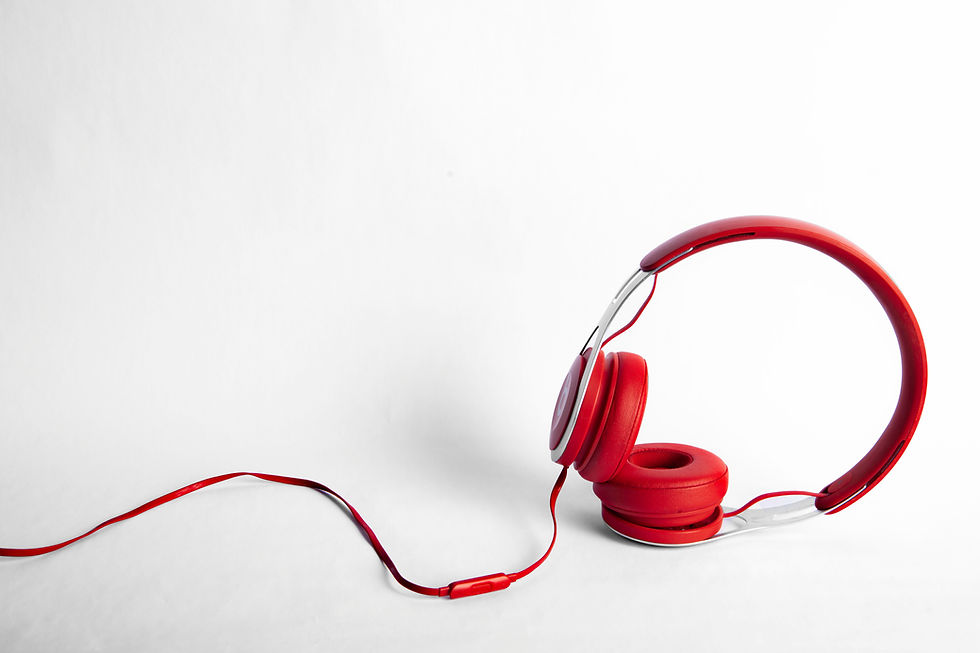How Do Hearing Aids Work?
- David Engelman

- Aug 10, 2023
- 4 min read
Updated: Apr 28

There are, unfortunately, many misconceptions about what hearing aids are and how they work. Hearing aids are sophisticated, high-tech instruments — far more advanced than simply making sounds “louder.”
While this article won’t dive into the deep engineering behind hearing aids, it will provide a clear and accessible overview of how they operate, how they are programmed, and what makes them such vital tools for better hearing.
Basic Components of a Hearing Aid

Before exploring how hearing aids function, it’s helpful to understand their basic parts. All modern hearing aids include a few essential components:
Battery – Supplies power to the device.
Microphone – Captures sound from the environment.
Amplifier – Processes and strengthens the sound signal.
Receiver – The “speaker” that delivers the processed sound into the ear.
Each of these components plays a crucial role in allowing the hearing aid to enhance your listening experience.
How Hearing Aids Amplify and Process Sound

Today, almost all hearing aids — including those provided through the NHS — are digital. This means the incoming soundwaves are converted from analogue signals into digital data inside the hearing aid's amplifier.
Once digitised, the hearing aid can manipulate sounds in sophisticated ways using signal processing algorithms. These algorithms help differentiate between various types of sounds — such as background noise, music, or conversation — and adjust amplification accordingly.
For example, if you’re dining at a busy restaurant and speaking with your partner across the table, your hearing aids will focus more on your partner’s voice and reduce some of the distracting background noise. Advanced hearing aids tend to perform this task more effectively than basic models. However, it’s important to note that hearing aids won’t eliminate background noise entirely — nor should they, as this would distort your natural perception of sound.
It’s helpful to think of hearing aids as tiny computers worn on your ears. They continuously analyse your acoustic environment and make split-second adjustments to help you hear clearly.
While many users do well with their hearing aids' default settings, your audiologist can fine-tune them based on the feedback you provide at follow-up appointments. For instance, if background noise remains problematic, adjustments can often be made to improve your comfort.
Many hearing aids also connect to smartphones via an app, allowing you to make basic adjustments yourself. However, wearing your hearing aids consistently is vital — the brain needs time to adapt to the new sound input. In essence, sound is travelling from one computer (your hearing aid) to another (your brain), and both need to work together for optimal hearing.
Hearing Aid Prescription and Custom Programming

Hearing aids are not “one-size-fits-all” devices. Instead, they are carefully prescribed and programmed based on the degree and type of your hearing loss.
For example, someone with a mild hearing loss will require much less amplification than someone with severe hearing loss. Moreover, hearing loss typically varies across different frequencies (pitches). It’s common for a person to have mild low-frequency loss but severe high-frequency loss.
At your fitting appointment, your audiologist will digitally program your hearing aids according to your unique hearing profile, creating a personalised hearing aid prescription.
Different prescriptive formulas can also be used depending on factors such as age, previous hearing aid use, and the specific characteristics of your hearing loss. Children, adults, new users, and experienced wearers often benefit from different programming approaches.
Sometimes, your audiologist may even trial different formulas to see which you prefer. The ultimate goal is to provide you with a natural listening experience: loud sounds should sound loud, and soft sounds should sound soft. These settings are verified using a procedure known as real ear measurements (REM).
Hearing Amplifiers and Other Devices

It’s important to mention a category of devices called personal sound amplification products (PSAPs).
Unlike professionally fitted hearing aids, PSAPs are basic devices that simply make all sounds louder without tailoring amplification to your specific hearing loss. Some products are incorrectly marketed to resemble hearing aids, but they do not offer the same benefits.
Nevertheless, PSAPs — often falling under the broader category of assistive listening devices (ALDs) — can sometimes be useful. For example, patients awaiting hearing aids from the NHS might use a personal listener device in the interim. These typically consist of a microphone and headphones and can provide meaningful short-term support. NHS audiology departments often loan out personal listeners while patients wait for hearing aid fittings.
Conclusion
I hope this article has helped clarify how hearing aids work and shown that they are far more than simple amplifiers.
If you would like to learn more about the hearing care we provide at Finchley Hearing, please explore our website or get in touch with any questions. We are a private, independent audiology practice in London, committed to ethical, evidence-based care, and we would love to help you on your journey to better hearing.
If you found this article helpful, please consider sharing it via the social media icons below. You can also subscribe to our blog to stay updated whenever we post a new article.



